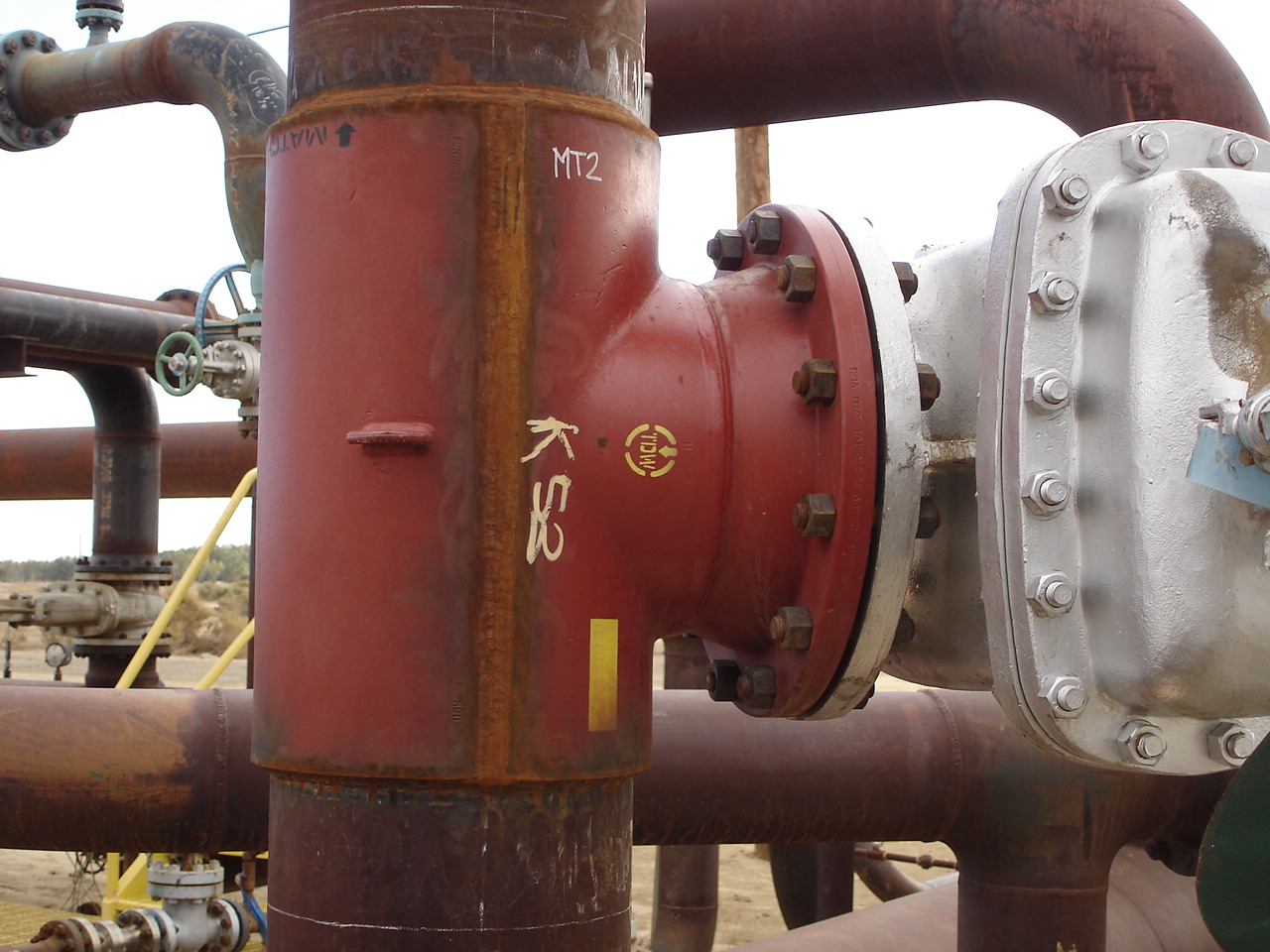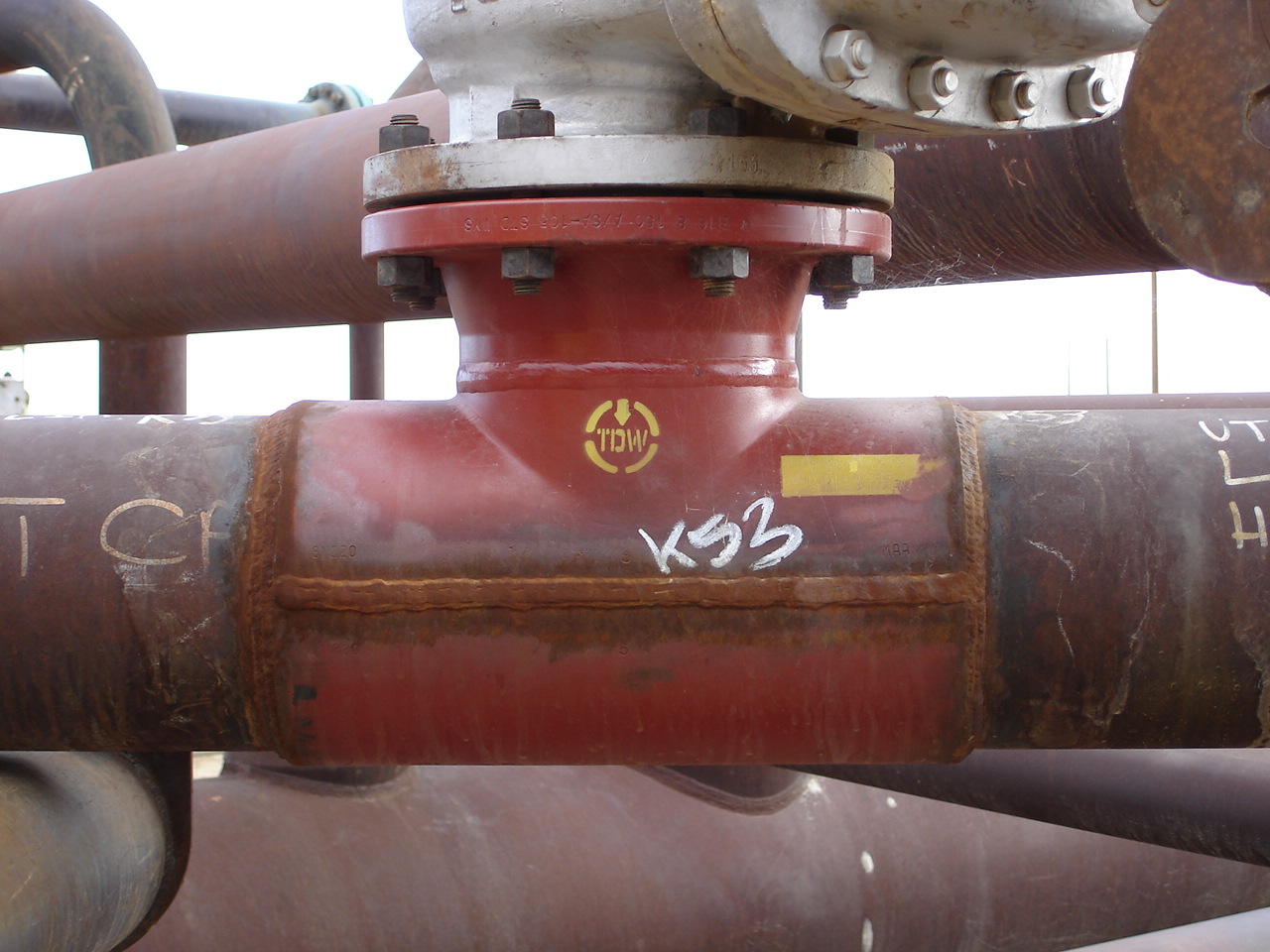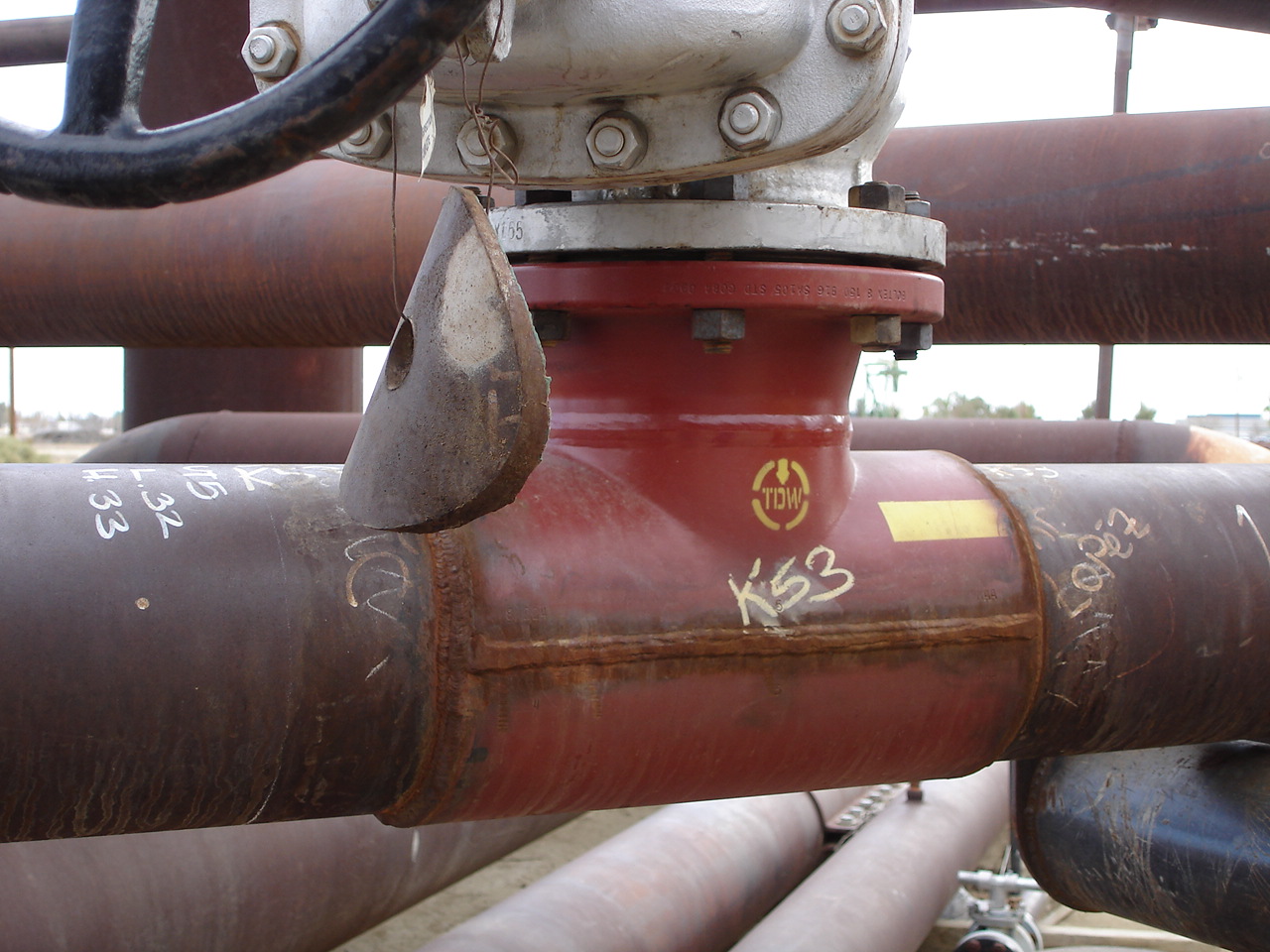Split Tee
A full encirclement split tee is used when hot tapping into a pipeline. It is a pipeline fitting designed such that the inner diameter of the fitting is the same size as the outside diameter of the pipe that will be hot tapped.
As a rule of thumb, a split tee is used when the branch connection is equal to or greater than half the diameter of the run direction. (The run direction is the direction of flow in the pipe that is being cut into.) If the branch vs. run direction is approaching this limit, it is extremely important to reference the organizations hot tap and piping standards to ensure the designer is in compliance.



Benefits of a Split Tee
- There are multiple benefits of using a split tee. Aside from the obvious, being able to tie into a line while it remains in service, a split tee is:
- Suitable for hot tapping activities and for installation of line stops. (Commercially, a line stop could be a Stopple which is installed in a line when a repair is necessary and the line cannot be taken out of service.)
- When done correctly, no potential for weld to penetrate tapping area. Though care needs to be taken not to penetrate the line that is being welded on. Welding burn through could cause the line to fail.
- Full bore split tees are available. Generally there is a full complement of reducing branch sizes when using a split tee.
the equipment manufacturer and relevant regulatory authorities is essential for a safe and successful hot tapping with a split tee installation.
Split Tee Advantages and Disadvantages | |
|---|---|
| Advantages | Disadvantages |
|
|
Hot Tapping with a Split Tee
Hot tapping with a split tee involves creating a branch connection on a pressurized pipeline without shutting down the system. It's a complex process that requires careful planning, adherence to safety standards, and attention to detail.
Pipeline Suitability - Ensure that the pipeline material and pressure rating are suitable for hot tapping. Verify that the contents of the pipeline are compatible with the hot tapping process.
Hot Tapping Equipment - Use specialized hot tapping equipment designed for the specific pipeline conditions. Follow the manufacturer's guidelines for the installation and operation of the hot tapping machine and associated components.
Safety Precautions - Prioritize safety throughout the entire process. Follow industry standard safety practices and use appropriate personal protective equipment (PPE).
Pipeline Conditions - Assess the temperature and pressure conditions of the pipeline. Consider the impact of the hot tapping process on the pipeline's structural integrity. Is the current line thickness thick enough to weld on without burning through the pipe? Refer to API 2201 Section 6.4 for minimum thicknesses.
Pipeline Coating - Is the pipe internally coated or cement lined? If so, a split tee is unacceptable. The heat from welding can cause the coating to flake off and any protections made by the coatings will no longer be valid. During the hot tap process, the tool will damage the coating or cement lining. This, too, will remove the ability for coating to protect the pipe at the hot tap.
Flammable or Hazardous Materials - If the pipeline contains flammable or hazardous materials, take additional precautions to ensure the safety of personnel and the environment. Are there chemicals in the line that might self ignite if exposed to the heat of the welding or hot-tap tool? This self ignition could cause sudden and catastrophic failure of the line.
Flow Control - Use a tapping valve to control the flow through the new branch connection during the hot tapping process. Ensure that the tapping valve is suitable for the specific pipeline conditions. Does the pipeline have a sustained flow rate to carry the heat generated by welded or the hot tap tool? If not, a full shutdown should be considered to make the tie-in.
Welding Procedures - Follow proper welding procedures when installing the split tee. Ensure that the welding process is compatible with the pipeline material and meets industry standards. Conduct a thorough inspection of the welds to verify their integrity.
Pipeline Integrity - Consider the impact of the hot tapping process on the overall integrity of the pipeline. Evaluate the potential for stress corrosion cracking, fatigue, or other issues that may arise from the modification. Is there a presence of chemicals that may induce stress cracking or corrosion? Examples of these are caustics, amines, nitrates, sulphur, etc.
Pressure Control - Implement proper pressure control measures to prevent over pressurization during the hot tapping process.
Shutdown Plan - Develop a shutdown plan in case of emergency or unforeseen issues during the hot tapping process. Be prepared to isolate and shut down the pipeline if necessary.
Regulatory Compliance - Ensure compliance with local regulations, industry standards, and codes governing hot tapping and pipeline modifications.
Inspection and Testing - Perform thorough inspections and testing to ensure the integrity of the hot tap and the new connection. Consider non-destructive testing (NDT) methods, such as ultrasonic testing or radiography. Weld inspection is required of the welds made to the split tee. API 2201 approves the use of dye penetrant, ultra-sonic, or magnetic particle inspection is also recommended before the hot tapping machine is installed.
Documentation - Document all aspects of the hot tapping process, including procedures, inspections, and test results.
It's crucial to involve experienced professionals who are familiar with hot tapping procedures and adhere to industry standards and guidelines. Additionally, collaboration with

